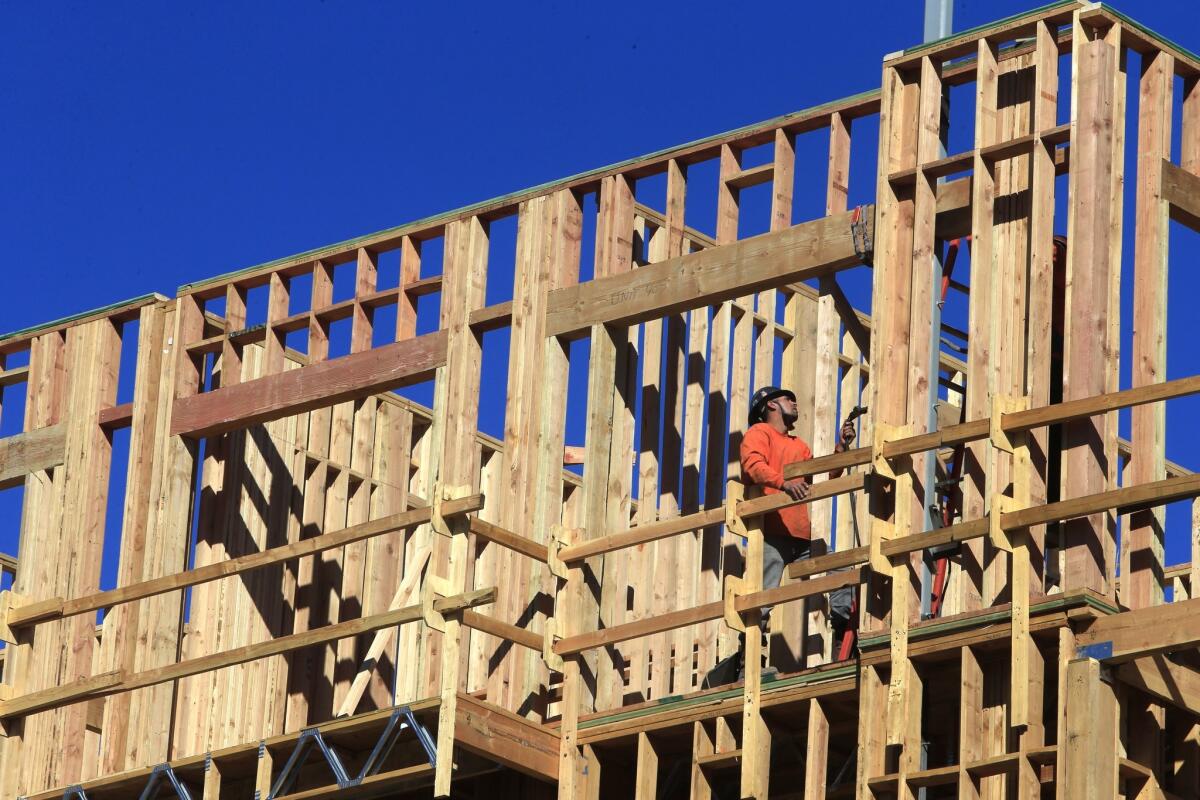Editorial: Just say ‘Yes in God’s backyard.’ Californians need homes, and houses of worship have land

- Share via
Rabbi Noah Farkas has a vision for how Valley Beth Shalom can use the synagogue’s giant parking lot to live out its values and fulfill its mission: Cover it with new affordable housing units for senior citizens.
That would allow aging members to stay close to their families and faith community, provide much-needed affordable apartments for the elderly in pricey Encino, and, since there is a preschool on the site, foster intergenerational connections between seniors and young students.
His challenge is that, like a lot of religious institutions, Valley Beth Shalom is land rich and cash poor. The cost of constructing affordable housing is staggering, and getting permission to build is time-consuming and expensive. That’s why Farkas is supporting Senate Bill 899, a proposal in the state Legislature that would make it much easier for religious institutions and nonprofit colleges to build affordable housing on their land.
The legislation is being carried by Sen. Scott Wiener (D-San Francisco), who introduced it in March after the demise of Senate Bill 50, his ambitious effort to override local zoning to allow bigger apartment complexes near transit hubs and four-unit buildings in single-family neighborhoods. While that bill proved too controversial for Wiener’s fellow lawmakers, SB 899 passed the Senate last month on a near-unanimous vote, even though it would also override local control. The bill now heads to the Assembly.
The idea of encouraging faith communities to put housing on their land has been gaining support for a number of reasons. Many churches, synagogues and mosques are sitting on large, underutilized properties. As fewer people choose to participate in organized religion, many congregations have seen their membership shrink along with their budgets. Yet religious leaders want to continue the mission to serve their almighty and their community.
So why not encourage them to use their land to help ease one of California’s most pressing problems, which is the crushing shortage of affordable housing?
Roughly 38,800 acres of land in California — roughly the size of the city of Stockton — are used for religious purposes and could be developed for housing, according to an analysis by UC Berkeley’s Terner Center for Housing Innovation. Nearly half of those acres are in so-called high-opportunity neighborhoods that have low poverty and greater economic, educational and environmental amenities. These are communities where it can be particularly difficult to build affordable housing because of the price of land, zoning and neighbor opposition.
But although religious institutions may have the land, they rarely have the resources or real estate expertise to navigate the bureaucracy and politics of development approvals, which can drag on for years and add millions of dollars to a project’s price tag.
SB 899 would streamline the process by allowing 100% affordable housing projects to be built by right — meaning they wouldn’t need planning commission or city council approval — if the projects are on land owned by religious institutions or nonprofit colleges, and the institutions partner with nonprofit developers to build the housing.
The idea is to create a new supply of land for nonprofit developers who build housing for low-income residents, while letting religious institutions better use their property and generate a small income from rentals. For nonprofit colleges, it would make it easier for campuses to add affordable housing for employees and students.
For a housing development bill, SB 899 has generated surprisingly little NIMBY opposition. The most vocal opponents are labor groups pushing to require the projects to hire union construction workers and apprentices, which would drive up costs and could make some affordable housing projects too expensive to build.
Throughout the contentious debate over SB 50 and state housing policies, there has been almost universal agreement that California desperately needs more affordable housing to provide stability for the state’s working poor and vulnerable residents. But when it costs, on average, $500,000 to build a low-income apartment in the state, it should be abundantly clear that California needs to make it much easier, faster and cheaper to build affordable housing. SB 899 can help houses of worship turn their buildings, offices and even parking lots into homes.
More to Read
A cure for the common opinion
Get thought-provoking perspectives with our weekly newsletter.
You may occasionally receive promotional content from the Los Angeles Times.










